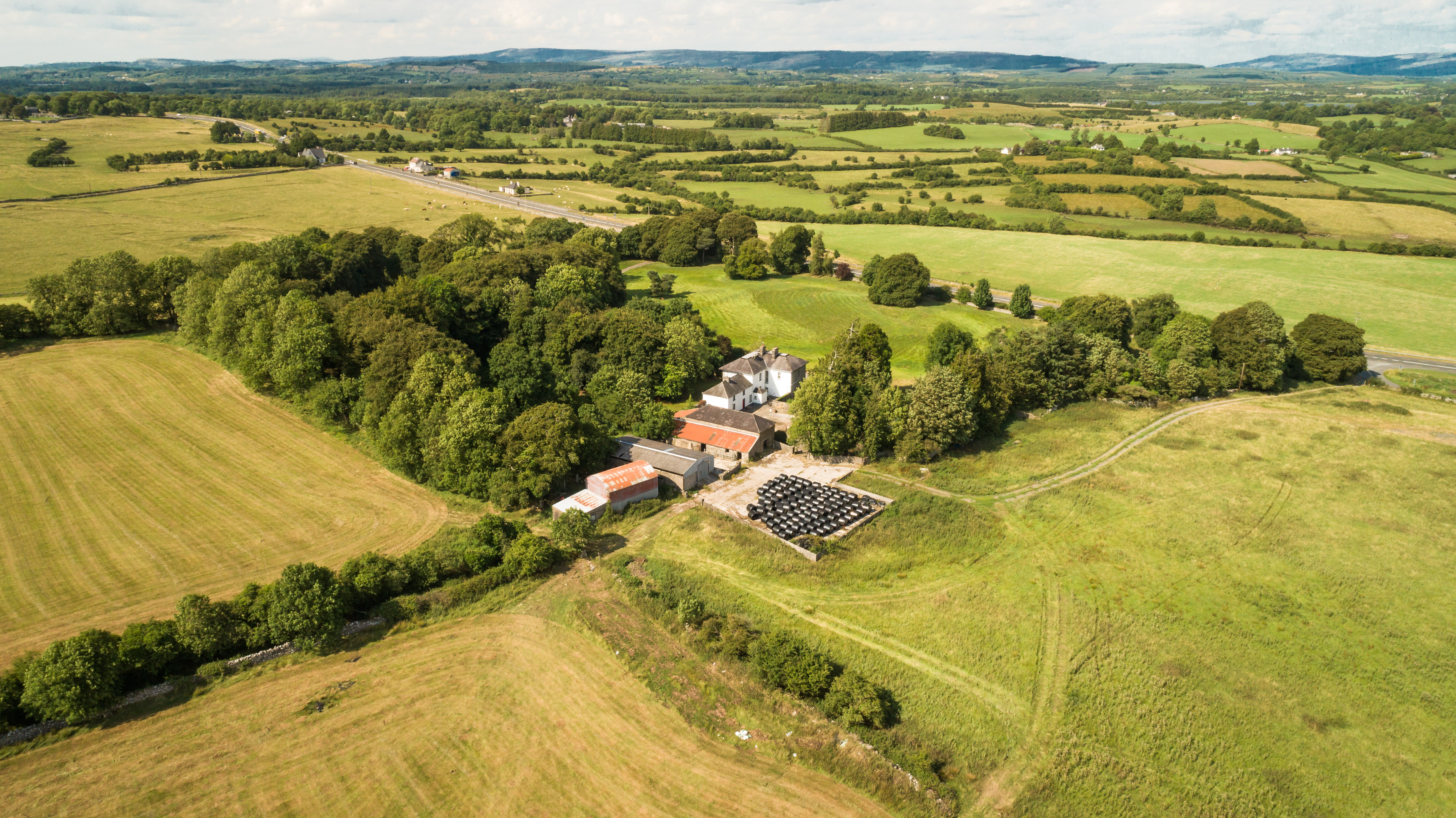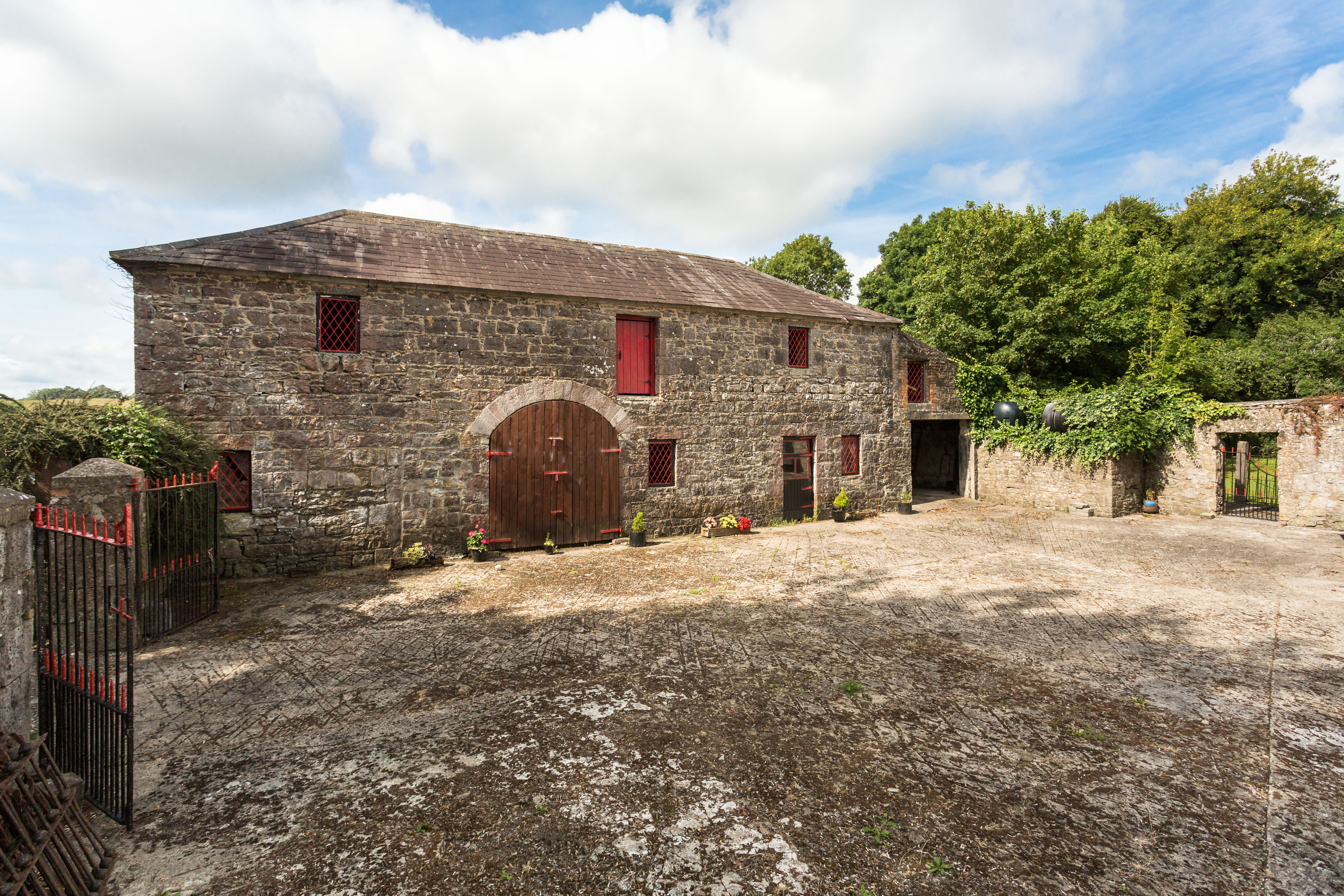“It was an idyllic place in which to grow up – the happiest of places.”
Patricia Harrington fizzes with enthusiasm as she recounts her family’s move from the UK to farm 98ac at Glencarne House, Ardcarne, Carrick-on-Shannon, Co. Leitrim.
“My parents, Patrick and Agnes, bought the property in 1963 and moved over from the UK. Both were from farming backgrounds in Roscommon,” Patricia said.
My dad had been in the merchant navy. He always wanted to be a farmer and became one at the age of 40.
“They carried out a lot of renovation work as the house hadn’t been lived in for four or five years. They did mixed farming – a bit of everything – including dairy and pigs in the early years and beef and sheep in the latter years.
“Dad worked to organic principles and had great empathy with the animals, giving them all names.”
Having left behind a glamorous lifestyle in the UK, Patricia’s mother embraced countryside activities, carrying around bales on her back and establishing an award-winning guesthouse that attracted high-profile personalities and others from around the globe.
“One set of Washington guests came to us every year for 42 years,” said Patricia.
“We had a family from Greenland who had never been on a farm before and they loved jumping over the haycocks and thought they could ride the cows like horses,” she recalled.
“We also had music nights and Derek Bell of the Chieftains was among those who stayed. It really was idyllic.”
Patricia remembers free and easy years of lending a hand on the farm, along with her three younger brothers, as well as boating and fishing.
Patricia’s mother has now taken the “extremely difficult” decision to sell up. Glencarne is available as a whole or in three lots.
Located 8km from both Boyle and Carrick-on-Shannon, the property consists of the residence with three reception rooms and seven bedrooms; a garden; a traditional outbuilding; farm buildings; a potential site, subject to planning permission; and silage and grazing land.
The land lies in a contiguous block and includes a site with lapsed planning permission to construct a house. The farmland is a combination of pasture suitable for silage and grazing land, with the potential for woodland planting, according to selling agent, James Butler of Savills.
It is fenced for livestock and can be accessed through the public roads and an internal track.
There is water to the fields via a combination of a natural supply and piped drinking troughs. The land has been let in recent years.
Sense of History
There is a real sense of history around the property. Glencarne House was built for Robert King, the first Viscount Lorton, as a satellite house for the Rockingham estate, one of the largest estates in Connacht.
The King family moved to Rockingham in 1810, having previously resided at King House in Boyle, a large property which is now a museum.
Rockingham House was destroyed by fire in 1957 and the extensive grounds are now open as Lough Key forest park and activity centre.
It is believed that the house was designed by the architect, John Nash, one of the most fashionable and influential architects of the Regency period who designed the nearby Rockingham House.
Glencarne house and farm has an accessible location off the N4 Dublin to Sligo road. It is situated between the historic town of Boyle in Co, Roscommon and the Co. Leitrim county town of Carrick-on-Shannon.
The area is renowned for boating, sailing and fishing, with Carrick-on-Shannon being the gateway to the Shannon-Erne Waterway.
Surrounded by unspoiled scenery, it has long been renowned as “an angler’s paradise”, with many species of game and course fish available nearby. The Lough Rynn Castle and Kilronan Castle hotels are both within a short drive.
The farm is available in the following lots: Glencarne House, outbuildings and paddock, approximately 12ac; Glencarne land south, approximately 59ac; and Glencarne land north, about 27ac.
Elevated Situation
The house occupies an elevated situation to the south of the N4, with a northeasterly-facing position. It is entered through a bell-mouthed stonewall entrance with piers and cast-iron gates. A hardcore sweeping driveway leads to the front of the house where there is parking.
Dating from about 1845, the house is listed as a protected structure. Constructed to an L-shape plan of stone beneath a pitched slate roof, it is a sister house to Ellesmere House, situated a short distance away.
The house is heated centrally by oil, with a range cooker heating the water and some radiators. There are mains electricity and water supplies and private drainage via a septic tank.
A formal garden lies to the west of the house. It includes a former vegetable garden and orchard. Mature trees surround the house. “They were one of the reasons my parents bought the property,” Patricia said.
Situated immediately to the rear of the house is a courtyard and an outbuilding of stone construction beneath a pitched slate roof. It is accessed from the main driveway through cast iron gates.
A grazing field is situated to the front of the house.
Lot 2 extends to about 59ac and has a separate access via the N4 and a minor public road. It has an internal farm track and includes land suitable for silage and permanent pasture.
An elevated site off the L1025 minor public road offers the potential to construct a house, subject to planning consent. Planning permission was previously granted but has now lapsed, while services are nearby.
It is a wrench for the Harringtons to leave the property but they hope that another family will move in and have the same idyllic experience they had.
“It is the perfect place for anyone with a young family. That would really keep the spirit of the place going,” said Patricia. “It has huge potential – the new owners could open a restaurant with rooms or a holistic centre, for example.”
The guide price is €985,000. Viewing is strictly by appointment with the joint selling agents: Savills Country, 20 Dawson Street, Dublin, contactable on: 01- 6634350; and Farrell Property, Carrick-on-Shannon retail and business park, on: 071-9620976.


